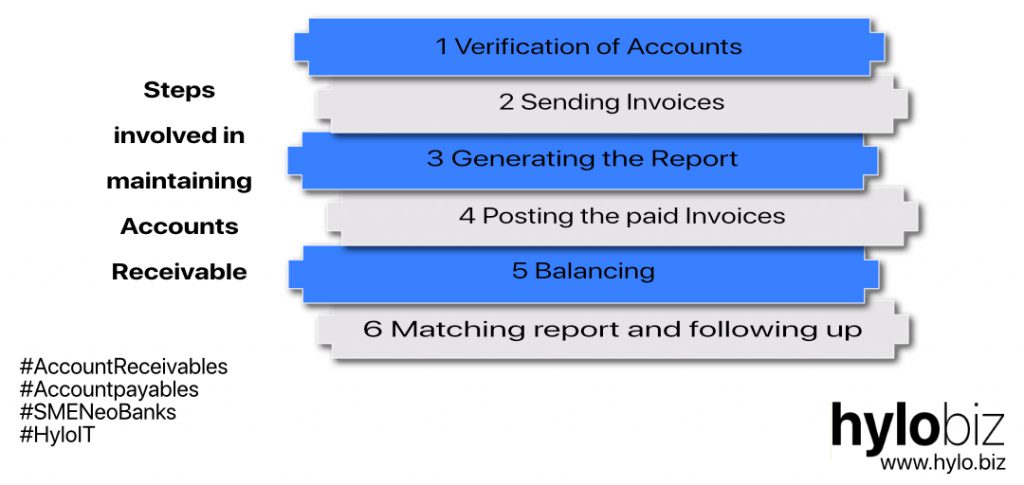Small businesses usually run on marginal profits at times and there is a need to keep a track of the credits offered and make prompt collections of the Accounts receivable amount from the debtors within the due date to run a successful and profitable business.
As an SME business owner, you might be wondering who a debtor is and how selling on credit may impact your business.
Who is Debtor?
Debtors are the individuals or organizations who owe money to a business for a purchase made by them on credit. When you let your buyer buy goods/services on credit, you need to book accounts receivables on your account book.
What are Account Receivables?
Once an invoice or a bill is sent to the customers after they purchased a product or service on credit, it becomes Account receivables unless the amount is paid.
Account Receivables are shown as a current asset on the Balance Sheet as they may turn into cash in the future (which is generally within a stipulated timeframe) based on payment terms.
Maintaining Account Receivables perfectly is important and a must to manage with care as it impacts the cash flow of a business. Moreover, it also is responsible for revenue generation and to avoid a cash crunch, needs to be collected back on time, otherwise, the credit may demand an irreparable loss to your SME business.
Steps involved in managing Account Receivables
Steps involved in maintaining Account Receivable include
- Verification of Accounts
- Sending invoices
- Generating reports
- Posting the paid invoices
- Balancing
- Matching reports and following up and intimating the debtor about them through emails and messages.

Why are Accounts Receivable important in small businesses?
Account receivables are the outstanding bills or invoices or the money that the customers or clients owe to the company when they purchase on credit. The firm’s responsibility is to collect the amount back within the stipulated time.
- For better sales and to improve and grow business and penetrate and advance on various market segments, it becomes important for a company to offer sales on credit. This gives a scope to promote better customer experiences.
- The businesses while applying for a loan may use Accounts Receivable as their collateral. These short-term or current assets may not only originate from credit sales but also may be receivable from shareholders or employees when they owe to the firm due to a loan. However, here we are more focused on the credits offered when a firm sells goods/services.
The Advantages of Account Receivables
Though risky offering, the advantages of Accounts Receivable are many
- Credits help the firm in staying competitive
- It builds customer loyalty and trust and helps grow sales
- A high collection ratio shows high efficiency and is a measure of the liquidity of the company’s Account
The Disadvantages of Account Receivables
When customers fail to pay for the purchases made on credit, your business may suffer a huge loss which sometimes may create havoc. Hence the historical credit scores/ records should be taken into consideration for a better experience.
The provision for bad debt in financial reports is a good practice to follow to avoid inconsistency by overstating borrowers or debtors as there is always a chance that they become defaulters for the amounts may not get repaid and hence turn into bad debt.
Differences between Accounts Payable and Accounts Receivable
Account payable is a current liability or a short-term debt that a company needs to pay for a purchase that it has done from an individual or business on credit. Account receivables on the other hand falling under short-term or current assets is the amount which an individual or a business owes to the company for a product or service sold to them on credit.
Account Payables is a liability while Account Receivables is an Asset.
Using Accounting Software to record Accounts Receivables
Tally, ZOHO, QuickBooks, MS Excel, and so on are the Accounting Software that you or your suppliers or clients in the supply chain may use at different levels.
Challenges in maintaining records
- When SMEs and their customers down the chain of business use various Accounting software and ERPs, the process of integrating data and maintaining Accounts become a challenge.
- Sometimes due to data being available in silos, it becomes difficult to get a clear picture of the amount collected to date and the balance receivable.
- Effective communication suffers, and in absence of a good and trustworthy presentation of claims, the chances of retrieval decline, and recovery of the amount from clients get delayed or sometimes remains impossible.
How Hylobiz can help you maintain your Account and integrate data?
Once you choose Hylobiz as your payment and invoice management partner, recording and data integration becomes easy for you.
- Analysis of your Account through a dashboard reporting that works on multiple ERPs in a distributed system of the ledger – helps you make informed decisions and promotes better business growth. The system that supports a network of ledgers, can maintain records, and give you a clear picture of the amount already paid or received and the balance due.
- There is an option of email or SMS service to communicate with your clients with the right data in hand.
- The system provides you with a connected system where the work of the employees and their access to data may be restricted based on the role. Hence you get a better track of the accounts receivable and focus on collecting the dues promptly, thus earning good gains.
Your small business will positively see growth when your Accounts Receivables no more see a bad debt situation.
Hylobiz is ready to help you with maintaining your Accounts Receivable.
So, feel free to contact us at-
Email- support@hylo.biz
